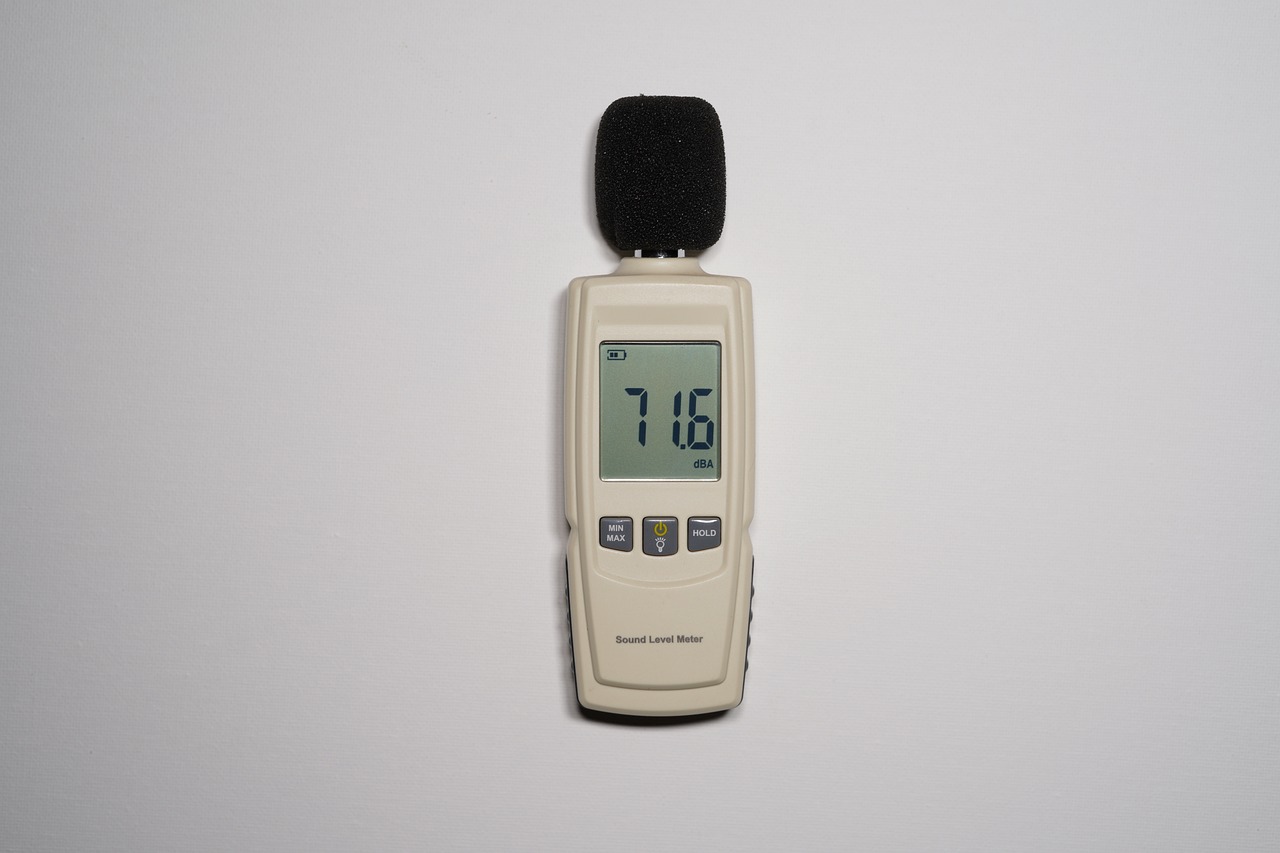Introduction
Modern society buzzes with activity 24/7, and this relentless pace often comes with a constant backdrop of noise. Whether it’s the hum of city traffic, the drone of an air conditioner, or the distant rumble of an airplane, these sounds of modern life are more than just annoyances. They are part of a broader environmental issue known as noise pollution.
Defining Noise Pollution
Noise pollution, sometimes referred to as environmental noise or sound pollution, is defined as any disturbing or excessive noise that can have deleterious effects on human health and environmental quality. It is often dismissed as a mere annoyance or a fact of life. However, beyond the inconvenience, constant or high levels of noise have the potential to cause significant harm to our health and overall well-being. When noise exceeds the norms of acceptability, it becomes an unwanted and harmful pollutant.
The Scope of the Noise Problem
Noise pollution has become an ubiquitous part of urban life. The World Health Organization (WHO) has declared noise pollution the second-largest environmental cause of health problems, just after air pollution. From bustling cities to tranquil suburban neighborhoods, from industrial plants to natural environments, the sounds of modern human activity are ubiquitous, creating a constant layer of noise that we often take for granted. But this doesn’t mean it’s benign. The scale of the noise problem is vast and has wide-ranging implications not only for individual health but also for communities and ecosystems.
Overview of the Article
This article will delve deeper into the issue of noise pollution. We’ll explore its sources and measure its impact, particularly focusing on its effects on health and well-being. We’ll also uncover sustainable noise control measures and examine how urban planning, technological solutions, and legal regulations can contribute to noise mitigation. Finally, we’ll look into the role of community action and personal steps that individuals can take to reduce noise pollution and improve the acoustic environment.
The intention is not to silence the vibrant soundtrack of human activity, but to encourage a more mindful, sustainable approach to the sounds we create. By understanding the impact of noise pollution, we can start taking active steps to decrease noise levels, promoting not only quieter, more enjoyable spaces but also healthier, happier lives.
Understanding Noise Pollution
Noise pollution is an unseen force that permeates our daily lives. Its sources are numerous, and its effects can be widespread and significant. It’s important to understand how noise pollution occurs, how we measure it, and how pervasive it truly is, to fully comprehend its impact and plan effective strategies for mitigation.

Sources of Noise Pollution
The sources of noise pollution are varied and numerous. They are typically categorized into two main types: anthropogenic (human-made) and natural.
Anthropogenic sources of noise pollution are the most common and include city traffic, industrial operations, construction activities, and residential noise, such as loud music, home appliances, and neighborhood activities. Airports and railways also contribute significantly to the overall noise levels in urban environments.
Natural sources of noise pollution, while less common, still play a part. These include noises from animals, weather phenomena, and natural disasters. Even though these are natural occurrences, they can contribute to overall noise levels, particularly in densely populated areas or places with a lot of wildlife.
Measuring Noise Pollution
Noise pollution is typically measured in decibels (dB). The decibel scale is logarithmic, which means that a small increase in the number of decibels corresponds to a massive increase in the noise level. For example, an increase of just 10 dB is perceived as a doubling of the noise level to the human ear. Normal conversation usually falls around 60 dB, while city traffic can reach 85 dB, and a jet engine can produce noise levels above 120 dB.
Furthermore, frequency or pitch of the noise, duration, and the time of occurrence (day or night) also contribute to how noise is perceived and how much it affects individuals and communities.
The Pervasiveness of Noise Pollution
Noise pollution is a pervasive problem, affecting both urban and rural environments. Urban areas, with their high population density, heavy traffic, and bustling activity, are the most significant contributors to noise pollution.
However, noise pollution is not just confined to the city limits. Industrial activities, agricultural operations, and transportation networks also bring noise pollution to rural areas. Meanwhile, natural areas are not immune to noise pollution either, with human activities such as tourism, transportation, and infrastructure development contributing to noise levels.
Noise pollution is a global issue that transcends boundaries. It is a constant presence in our daily lives, shaping our experiences and interactions with our environment. As our world becomes increasingly urbanized and industrialized, noise pollution is set to become an even more significant challenge, affecting more people and ecosystems. Understanding its sources and pervasiveness is the first step in devising sustainable solutions to control and mitigate its impact.
Health Impacts of Noise Pollution
Noise pollution does not merely interfere with our daily activities; it poses serious threats to our health. It impacts both our mental and physical health, with particular concerns for children and vulnerable populations. Understanding the health effects of noise pollution can prompt action to mitigate these unwanted sounds and contribute to a healthier society.

Impact on Mental Health
Noise pollution has a profound impact on mental health. Persistent exposure to high levels of noise can lead to stress and annoyance, triggering our body’s “fight or flight” response even when there is no actual threat. This can result in anxiety, depression, irritability, and even a higher risk of suicide.
Moreover, noise can disrupt sleep patterns, leading to insomnia, fatigue, and lower productivity. Lack of quality sleep is linked with cognitive issues, including difficulty concentrating, memory problems, and decreased problem-solving abilities. The mental health impacts of noise pollution underscore the urgent need to address this often-overlooked issue.
Effects on Physical Health
While the mental health impacts of noise pollution are alarming, the physical health effects are just as significant. Long-term exposure to high noise levels can lead to cardiovascular problems, including hypertension and heart disease. The stress response triggered by noise pollution increases heart rate and blood pressure, contributing to the development of these conditions.
Noise pollution also affects our hearing. Prolonged exposure to loud noise can lead to noise-induced hearing loss, tinnitus (ringing in the ears), and hyperacusis (heightened sensitivity to sound). While these conditions are often associated with occupational exposure to noise, they can also affect individuals exposed to high noise levels in their homes or communities.
Children and Vulnerable Populations
Children and vulnerable populations, such as the elderly and those with pre-existing health conditions, are particularly susceptible to the harmful effects of noise pollution.
In children, noise pollution can disrupt learning and cognitive development. It can impact reading comprehension, memory, and concentration, leading to poor academic performance. Moreover, children exposed to high noise levels are at risk of developing stress-related disorders, including anxiety and depression.
For vulnerable populations, noise pollution can exacerbate existing health conditions. The elderly, for example, may suffer from disrupted sleep, increased risk of falls, and worsening of cardiovascular conditions due to noise.
In conclusion, the health impacts of noise pollution are extensive and significant, affecting all aspects of life. These impacts extend beyond mere annoyance, affecting our physical and mental well-being, and that of our children and vulnerable populations. Recognizing these health impacts can empower us to take proactive steps towards sustainable noise control measures, fostering healthier communities for all.
Noise Pollution and Well-being
Noise pollution goes beyond health impacts, affecting our overall well-being. It interferes with our daily lives, including our sleep and work productivity, and affects social interactions and community cohesion. Exploring these facets deepens our understanding of the full impact of noise pollution and the urgency of finding sustainable solutions.

Noise Pollution and Sleep Disruption
Sleep is a fundamental human necessity, vital for physical and mental health. Unfortunately, noise pollution greatly interferes with this necessity. Living near noisy areas, such as busy roads or airports, often leads to disrupted sleep patterns. Sudden noise can jolt us from sleep, while a consistent noise background can prevent us from falling asleep or reaching deep, restful stages of sleep.
Sleep deprivation, resulting from noise pollution, has numerous negative consequences. It affects mood, energy levels, cognitive function, and even our immune system. It increases the risk of accidents, hampers our decision-making ability, and affects our overall quality of life.
The Effect on Productivity
Noise pollution also impacts productivity. In the workplace, high noise levels can be distracting and stressful, making it difficult to concentrate and complete tasks efficiently. It can lead to increased errors, reduced creativity, and higher stress levels.
Schools are not immune to this issue. Children in noisy classrooms or schools located near busy streets may struggle with reading comprehension, concentration, and academic performance. Thus, mitigating noise pollution is crucial for maintaining productivity in our work and learning environments.
Social and Community Impacts
Noise pollution has significant social and community impacts. It can limit the use of public spaces and negatively affect property values. For example, parks near highways or under flight paths might be less enjoyable due to the constant noise.
Moreover, constant exposure to noise pollution can lead to community tension and conflict. People may disagree on what constitutes an acceptable noise level, leading to disputes among neighbors, landlords, and tenants.
In a broader sense, noise pollution may affect our connection with nature. The serenity of natural environments can be disturbed by intrusive man-made noises, impeding our ability to relax and recharge.
In summary, noise pollution affects more than just our health. It influences our daily lives and well-being, from our sleep and productivity to our enjoyment of public spaces and community relationships. Recognizing these impacts underscores the urgency of implementing sustainable noise control measures for a better quality of life.
The Role of Urban Planning in Noise Control
Urban planning plays a crucial role in controlling and reducing noise pollution. The design and layout of a city can significantly influence the noise levels experienced by its inhabitants. Consequently, integrating noise control measures into urban planning can bring about substantial improvements. We’ll explore this through urban design principles, implementation strategies, and real-world case studies.

How Urban Design Influences Noise Levels
The design and layout of a city greatly impact the noise levels its residents experience. Factors such as building density, road layout, the placement of recreational and commercial areas, and the use of green spaces all play a part in dictating noise levels.
Tightly packed buildings can create echo effects, amplifying noise. Wide streets filled with traffic contribute significantly to noise pollution, while busy recreational and commercial areas can be sources of increased noise. On the other hand, green spaces, both large parks and smaller green patches, can absorb and reduce noise, providing quiet havens within the urban soundscape.
Implementing Noise Control in Urban Planning
Implementing noise control in urban planning involves several strategies. These include zoning regulations that separate noisy commercial areas from residential zones and designing road networks to minimize traffic noise in residential areas. Another approach is to incorporate green spaces into urban design, which can absorb sound and provide quiet spots for relaxation.
Urban planners can also employ noise-reducing infrastructure, such as sound barriers around highways or sound-absorbing materials in building design. Smart city design can also leverage natural elements, like hills and vegetation, to serve as natural noise barriers.
Case Studies of Noise-Smart Urban Development
Around the world, numerous cities are adopting noise-smart urban development strategies. For example, in Barcelona, the “Superblocks” project aims to reduce traffic noise by redirecting it away from residential areas. The city has consolidated several blocks into single entities, with interior spaces prioritized for pedestrians and cyclists, significantly reducing noise pollution.
In Singapore, one of the world’s densest cities, urban planners use meticulous design to mitigate noise. High-rise residential buildings are designed with their narrowest side facing the roads to reduce exposure to traffic noise. Also, noise barriers are widely used along expressways that pass close to residential areas.
These examples illustrate the power of urban planning in mitigating noise pollution. Through thoughtful design and strategic regulations, cities can become quieter, more enjoyable places to live.
In conclusion, urban planning has a significant role to play in controlling noise pollution. Through smart design principles, the implementation of noise reduction strategies, and lessons from real-world case studies, we can create urban spaces that promote health and well-being by actively managing noise levels.
Technological Solutions for Noise Control
As we strive to combat noise pollution, technology offers an array of solutions. From noise-cancelling technologies that make our immediate environment more comfortable, to the role of acoustics in architecture that reduces noise at the source, we are continually finding innovative ways to control noise. Let’s delve into these technological advancements and highlight some case studies of innovative noise control technologies.

Noise-Cancelling Technologies
Noise-cancelling technology has been a significant development in personal noise control. These technologies work by producing an “anti-noise” signal to counteract the unwanted noise, effectively “cancelling” it out. Noise-cancelling headphones are the most common application, which use built-in microphones to detect external noise and generate a counteracting signal.
However, noise-cancelling technology is expanding beyond personal audio devices. For example, some cars now incorporate noise-cancelling technology to create a quieter ride by reducing engine and road noise.
The Role of Acoustics in Architecture
Acoustics play a pivotal role in architecture when it comes to noise control. The use of sound-absorbing materials and the strategic design of buildings can significantly reduce noise levels.
Sound-absorbing materials, such as foam or specialized plaster, can absorb sound waves, preventing them from bouncing back into the room and reducing the overall noise level. These materials are now often used in the construction of homes, office buildings, and public spaces.
Furthermore, architects now also design buildings to minimize noise pollution. They consider the building’s orientation, layout, and the placement of windows and walls to shield inhabitants from external noise.
Case Studies of Innovative Noise Control Technologies
Innovative technologies are continuously being developed to tackle noise pollution. For instance, an Israeli company, Silentium, has developed an active noise control system that can be integrated into a range of products from cars to home appliances, reducing the noise they produce.
Another innovative solution is “noise-eating” road barriers, such as those developed by the Dutch company 4Silence. Their product, the WHISwall, is a roadside barrier that diffracts the sound waves from road traffic upwards, reducing the noise experienced by nearby residents.
In Hong Kong, a densely populated city with considerable noise pollution, the government installed low-noise road surfaces and noise barriers, which have led to a decrease in traffic noise.
Technology, as we see, plays a crucial role in noise control. From personal noise-cancelling devices to the use of acoustics in architecture and beyond, these advancements are providing valuable tools in the battle against noise pollution. And as these case studies illustrate, there is considerable potential for the development of even more innovative solutions in the future.
Legal Regulations and Policies
Controlling noise pollution isn’t just a matter of personal responsibility or technological innovation. Legal regulations and policies also play a critical role in limiting our exposure to harmful noise levels. In this section, we’ll review current laws and regulations, examine the role of policy in noise control, and explore some of the international efforts being made to combat this pervasive issue.

Current Noise Control Laws and Regulations
Most countries have laws and regulations in place to control noise pollution, typically regulating acceptable noise levels during certain times of the day, or in certain areas. For example, in the United States, the Noise Control Act of 1972 empowered the Environmental Protection Agency to establish and enforce noise standards.
In the European Union, the Environmental Noise Directive requires member states to assess and manage ambient noise. They must create strategic noise maps and action plans to manage noise issues and effects, particularly in large urban areas.
Cities also have their own local noise ordinances, often regulating common noise sources like construction, loud music, and vehicles. These laws provide a legal framework for individuals and organizations to be held accountable for creating excessive noise.
The Role of Policy in Noise Control
Policy plays a crucial role in noise control. In addition to establishing permissible noise levels, it can promote the use of quieter machinery, improve urban planning, and encourage research into more effective noise control methods.
Policy can also facilitate public education about the health risks associated with noise pollution, encouraging individuals to take steps to reduce their own noise footprint.
International Efforts for Noise Control
Noise pollution is a global issue and requires international cooperation to address. The World Health Organization (WHO) has been at the forefront of these efforts, publishing guidelines for community noise and nighttime noise exposure in Europe.
The WHO’s guidelines are comprehensive, covering various noise sources including traffic, railways, airports, and leisure activities. They provide a basis for developing local and national regulations and help inform urban planning and noise management worldwide.
International bodies like the European Commission are also taking action against noise pollution. The Environmental Noise Directive requires member states to map noise exposure in major cities and take action to reduce noise levels, particularly in areas where these exceed the recommended limits.
While legal regulations and policies are an essential part of noise control, they can only be truly effective when paired with public awareness and personal responsibility. As we continue to acknowledge the serious implications of noise pollution on health and well-being, it’s clear that concerted, coordinated efforts on all these fronts are essential.
Community Action Against Noise Pollution
Reducing noise pollution isn’t just the responsibility of policymakers and urban planners—it’s a community-wide effort. From grass-roots activism to neighborhood noise control initiatives, communities are taking action against noise pollution. In this section, we’ll explore the role of communities in noise control, delve into examples of successful community action, and look at how we can encourage more people to participate.

Role of Community in Noise Control
Communities play a pivotal role in noise control. First, they can rally together to ensure enforcement of local noise ordinances, bringing violations to the attention of local authorities. They can also work towards self-regulation, promoting awareness and encouraging neighbors to respect “quiet hours.”
Furthermore, community members can advocate for more comprehensive noise control policies, both on the local and national level. They can demand that their elected officials prioritize noise pollution, and insist that it be considered in urban planning and development projects.
Examples of Successful Community Action
There are numerous examples of successful community action against noise pollution. In New York City, for instance, a group called “Lower East Side Dwellers” campaigned against noise pollution from nightlife venues, which led to stricter enforcement of noise ordinances.
In Europe, residents living near airports have formed community groups to protest against noise pollution. These groups have achieved varying degrees of success, with some managing to secure restrictions on night flights.
Closer to home, neighborhood associations often establish “quiet hours,” during which loud activities like construction are prohibited. These examples show that when communities come together, they can achieve significant noise reduction and improve quality of life.
Encouraging Community Participation
Encouraging more community participation in noise control efforts is key. Public awareness campaigns can help educate individuals about the health risks of noise pollution and the importance of noise control. Communities can also hold public meetings or forums to discuss noise issues and develop solutions.
Local schools can incorporate noise pollution education into their curriculum, fostering a sense of responsibility in younger generations. Social media can also be a powerful tool, helping to mobilize community members and spread the word about noise control initiatives.
Community action against noise pollution shows that everyone has a part to play in tackling this issue. From supporting and enforcing noise control laws to advocating for better policies and taking part in local initiatives, community involvement is crucial. Together, we can create quieter, healthier, and more peaceful living environments.
Personal Actions to Reduce Noise Pollution
Noise pollution might seem like an issue too large for individuals to tackle. However, by taking steps to control noise pollution in our personal spaces and adapting our behavior, we can contribute to a larger, collective solution. In this section, we’ll cover ways to limit noise exposure at home, encourage quiet spaces, and discuss how mindfulness and coping strategies can play a significant role in managing noise pollution.

Ways to Limit Noise Exposure at Home
Limiting noise exposure at home is the first step towards a quieter life. Consider investing in noise-dampening materials such as curtains, carpets, and insulation, which can absorb sound and prevent it from spreading. Pay attention to the noise produced by household appliances—many newer models are designed to operate more quietly.
Practicing “quiet hours” can help, too. This might involve refraining from using loud appliances early in the morning or late at night. If you’re living in an apartment, try to be mindful of shared walls and floors, limiting noisy activities to daylight hours out of respect for your neighbors.
Encouraging Quiet Spaces
Promoting and maintaining quiet spaces in our lives can be greatly beneficial. These might include a quiet room at home, a peaceful garden, or a tranquil local park. Schools and workplaces could consider setting up quiet zones for relaxation and focused work.
As communities, we can advocate for urban planning that includes quiet spaces, such as parks and green areas, and supports noise barriers around busy roads or industrial zones. Moreover, promoting quieter modes of transportation—like cycling, walking, or electric vehicles—can significantly reduce noise pollution in our cities.
The Role of Mindfulness and Coping Strategies
Coping with noise pollution isn’t just about reducing the noise in our external environment—it’s also about how we manage our internal response. Mindfulness techniques can help us focus our attention away from disruptive sounds, reducing their impact on our stress levels and overall well-being.
Practices such as meditation, deep-breathing exercises, or yoga can enhance our ability to tolerate and cope with noise. Sound masking, with the help of white noise machines or apps, can also be a useful tool for coping with unwanted noise, especially during sleep.
In conclusion, while we can’t eliminate noise pollution overnight, there’s much we can do as individuals to lessen its impact on our lives. By implementing noise reduction measures at home, advocating for quiet spaces, and practicing mindfulness, we can contribute to the broader goal of noise control, improving not only our personal well-being but also that of our communities.
Conclusion
The noise that surrounds us can often seem as inevitable as the air we breathe. However, as we have discussed, this pervasive pollution carries with it significant consequences for our health, well-being, and communities. In this concluding section, we will recap the impacts of noise pollution, underscore the importance of sustainable noise control measures, and emphasize the role we all have in mitigating the ill effects of noise pollution.

Recap of Noise Pollution’s Impact on Health and Well-being
Noise pollution is much more than a mere annoyance—it is a pressing health concern. The incessant sounds of traffic, industry, and even our devices can lead to an array of mental and physical health issues, from stress and anxiety to heart disease. The vulnerability of certain populations, including children and the elderly, adds another layer of urgency to this issue.
Moreover, noise pollution has wide-ranging effects on our overall well-being. It disrupts our sleep, impairs our productivity, and strains our social and community interactions. In this sense, noise pollution not only damages our health but also erodes the quality of our lives.
The Importance of Sustainable Noise Control Measures
Given these impacts, the need for sustainable noise control measures is clear. From urban planning that integrates noise-smart designs, to innovative noise-cancelling technologies, to robust noise control laws and regulations—these solutions are crucial in our fight against noise pollution.
However, controlling noise pollution isn’t just a matter of institutional or technological solutions. Community action plays a significant role, as communities can actively participate in noise control, advocate for quieter spaces, and support regulations that limit noise.
Encouraging Readers to Act Against Noise Pollution
Lastly, it’s essential to remember that we are not powerless in the face of noise pollution. On a personal level, we can limit our noise exposure at home, promote quiet spaces, and employ mindfulness techniques to manage our response to noise. By taking such actions, we contribute to a larger effort that can lead to more peaceful, healthier spaces for all.
We hope that this article has not only informed you about the pervasive problem of noise pollution but also inspired you to become part of the solution. Each step we take, no matter how small, can have a ripple effect, helping to build a quieter, more sustainable world—one where we can hear the natural sounds that often go unnoticed in the hustle and bustle of our noisy lives.
In closing, let’s not only reduce noise pollution—let’s also make a conscious effort to listen, fostering a deeper connection with our environment, our communities, and ourselves.

